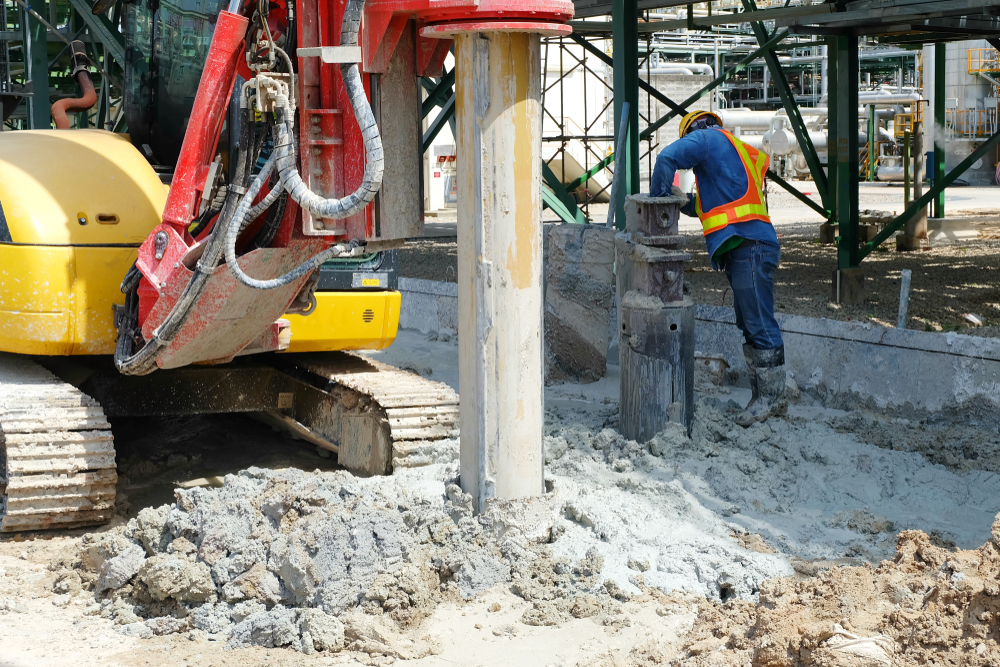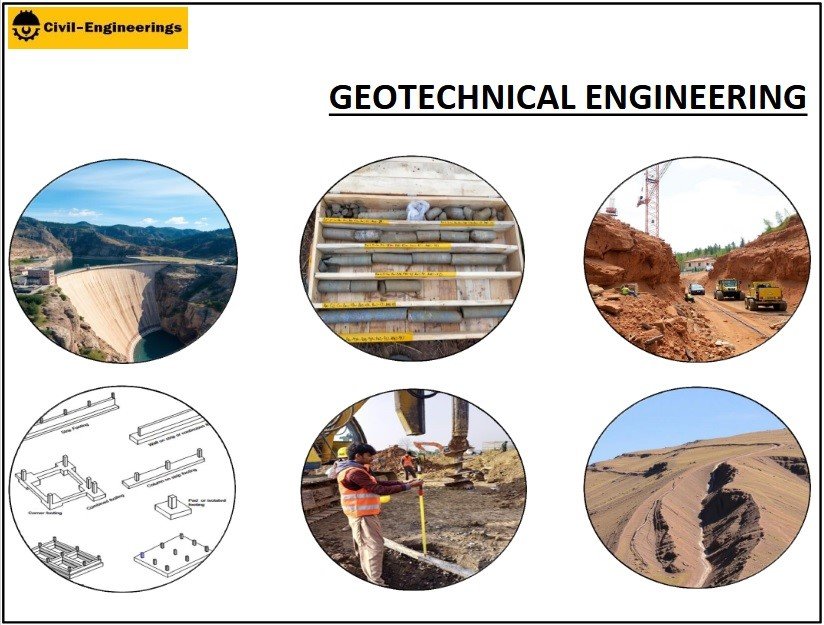Geotechnical Engineering For Construction Projects Can Be Fun For Everyone
Rumored Buzz on Geotechnical Engineering For Construction Projects
Table of ContentsThe Ultimate Guide To Geotechnical Engineering For Construction ProjectsGeotechnical Engineering For Construction Projects for BeginnersGeotechnical Engineering For Construction Projects Things To Know Before You Get ThisNot known Details About Geotechnical Engineering For Construction Projects The Definitive Guide to Geotechnical Engineering For Construction ProjectsAll about Geotechnical Engineering For Construction ProjectsGeotechnical Engineering For Construction Projects Things To Know Before You Get ThisFacts About Geotechnical Engineering For Construction Projects Revealed
Coinciding with this boosted intricacy comes geological and ecological factors that influence the design of the structure, which is arguably one of the most integral part of any development. People need to trust that structures, bridges, and roads will certainly stand the examination of time. A Geotechnical designer suggests on exactly how a framework can best be sustained providing its unique conditions What's hidden below the surface area of the ground is likely the most vital piece of information that a Geotechnical Engineer is after.These examples are after that analyzed by the lab to determine dirt structure (Geotechnical Engineering for Construction Projects). The failure of sand, silt, clay, and various other materials present in the dirt, helps the designer establish what one-of-a-kind features the website has and what the effects of those might be. Obviously dirt composition is only one examination that can be done on examples
The Greatest Guide To Geotechnical Engineering For Construction Projects
Based upon these examinations, there might be much more dirt borings that are pierced, or the designer might have adequate details from the initial tests to make a recommendation to the client on just how ideal to wage their job. Outcomes are usually reported with borings logs which show the soil structure and attributes at a variety of midsts.
Geotechnical engineers are accountable for understanding the residential or commercial properties of natural deposits and using this knowledge to develop secure, economical styles for building and construction tasks. It is a crucial part of any kind of civil engineering task, as it is utilized to determine the suitability of a site for construction and to ensure the structure's security.
This includes executing laboratory tests on the samples and making use of geophysical methods such as seismic refraction and electrical resistivity surveys. This data is utilized to examine the website's viability for building and construction and to determine the kind of foundation that ought to be utilized. Geotechnical design assesses soil conditions, recognizes potential hazards, selects an appropriate foundation system for the recommended structure, and determines the ideal structure layout for a provided task.
Some Of Geotechnical Engineering For Construction Projects
The structure may end up being unsteady or collapse without appropriate soil stabilisation, resulting in pricey repair services and potential injury. The stabilization procedure involves using numerous methods to boost the security of the dirt, such as compaction, grouting, and the addition of strengthening materials. Without soil stablizing, the dangers connected with building and construction tasks would certainly be a lot higher, and the outcomes much less reputable.
Geotechnical engineers conduct website examinations to examine the dirt's buildings and identify prospective threats. They develop and execute soil stabilization strategies, such as adding cement, lime, or other stabilizing representatives, to boost the dirt's toughness and stability.
About Geotechnical Engineering For Construction Projects
Geotechnical designers are vital in helping to guarantee that dirt stablizing is done properly to ensure that the framework is secure and secure. Geotechnical design is likewise used to assess soil problems and determine possible risks. This includes analyzing possible flooding, landslides, and various other natural calamities that can influence the foundation.
Geotechnical designers utilize this knowledge to do website examinations, dirt, and rock testing, and to analyze the outcomes to identify the ideal style criteria for a job. This details is made use of to ensure that the structure, retaining walls, slopes, and various other structures improved or within the subsurface products have sufficient security and resistance to external tons, such as quakes, wind, and water.
These frameworks need a deep understanding of the actions of the subsurface products, in addition to the ability to take care of the effect of excavation and building and construction on the surrounding setting. Geotechnical designers use their proficiency to figure out the suitable design criteria for these frameworks, such as the shapes and size of the passage, the strength of the sustaining rock, and the kind and amount of assistance needed.
In addition to the style and construction of structures, geotechnical engineering additionally plays a critical role in the recovery and maintenance of existing structures. As frameworks age, they may experience degradation or other problems that affect their stability and efficiency. Geotechnical designers utilize their proficiency to evaluate the condition of these frameworks, determine the reasons for the issues, and create approaches to address them.
Geotechnical Engineering For Construction Projects Things To Know Before You Get This
In this article, I will certainly discuss the function of geotechnical design and the sorts of issues geotechnical designers address. Geotechnical designers (geotechs) are associated with almost every kind of civil engineering task. Besides, every structure is supported by soil or rock unless it is floating, flying, or dropping.
Geotechs are generally most involved at the start of a job. read this post here Geotechnical Engineering for Construction Projects. Several of the tasks that a geotech might be in charge of are checking out subsurface conditions, identifying needed lab testing of dirt and rock, analyzing the subsurface exploration outcomes, and writing reports that document the site problems and offer referrals for foundations, fill requirements, slope security, and so on
It is not uncommon for geotechnical engineers to focus on just one of the areas listed above and study that subject their entire job. Geotechnical engineering is an important aspect of any kind of civil design project. Despite how great a structure is constructed, it will not be great for long if the structure is insufficient.
The 9-Minute Rule for Geotechnical Engineering For Construction Projects

Frequently, points that may not appear crucial end up being vital years later when concerns develop. One last thing to maintain in mind: geotechnical design is married to geology. Despite just how wonderful your engineering experience is, if something vital is missed out on in the geologic characterization at a site, your expertise might not save you.
Jese lives in West Virginia with his wife and child. He enjoys creeping around on any landslide he can locate and spending time fly fishing on the water. He can be discovered on LinkedIn. I hope you enjoyed today's post by guest author Jese Vance. If you have an interest in your company potentially signing up with the Civil Design Collective, please call us right here or call us at 800-920-4007. I hope you'll join us.
The Only Guide for Geotechnical Engineering For Construction Projects

It is essential to design the structure to hold up against natural and man-made tons. Lots can be upright or side. It is crucial to recognize the dirt condition before creating the type and deepness of foundation needed for the framework. In order to recognize the subsurface dirt condition, a geotechnical investigation is called for.
Geotechnical Engineering For Construction Projects for Dummies
As soon as the examination results come, the Geotechnical try this web-site Engineer analyses the record, which describes the soil and rock residential properties groundwater condition and the connected threats. The sort of foundation needed to build the structure is after that figured out. Based upon the recommendation of the Geotechnical Designer, the structural engineer after that creates the framework.